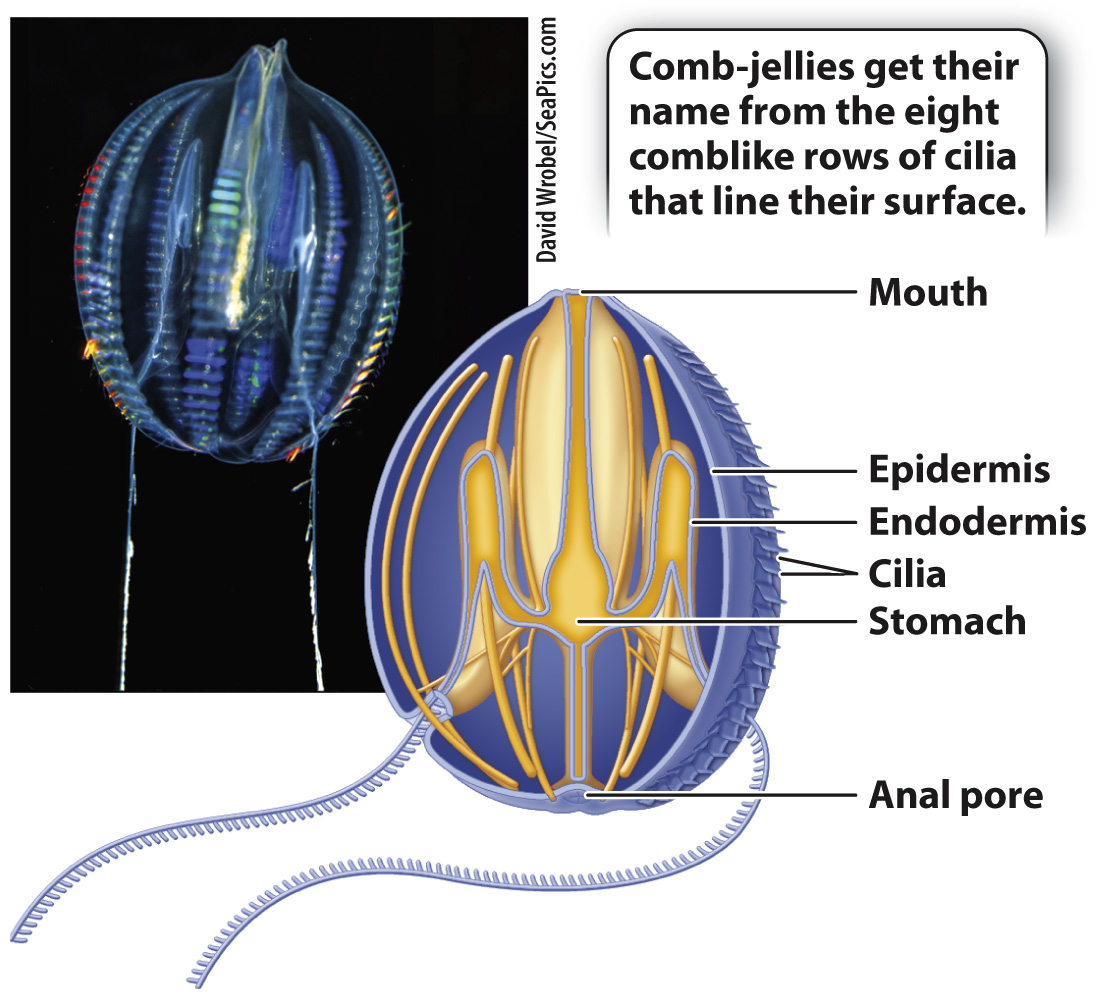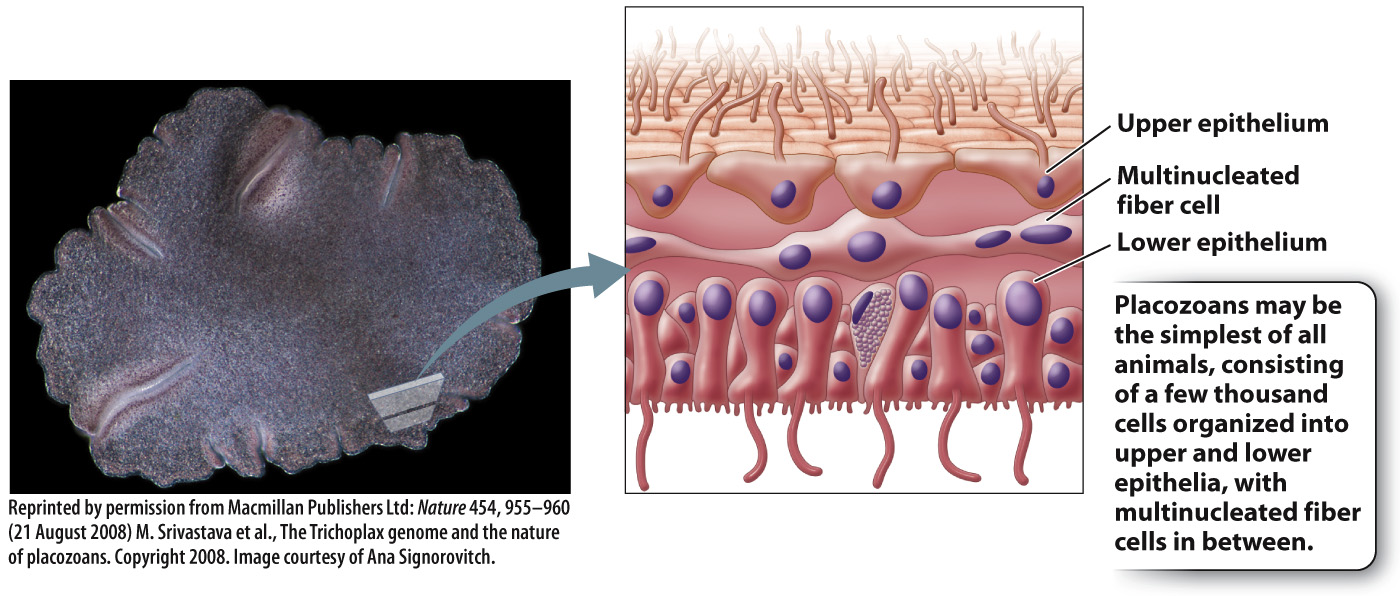Ctenophores and placozoans represent the extremes of body organization among animals that branch from early nodes.
Our exploration of nonbilaterian animals ends with ctenophores, also called comb-jellies, and placozoans. Neither of these groups is diverse (just 100–150 species of comb-jellies have been named, and so far only one species of placozoan), but they may reveal a significant amount about the relationship between bilaterians and earlier-branching animals.
Ctenophores resemble cnidarians in body plan, and for many years most biologists thought that the two were close relatives. Like cnidarians, ctenophores have radial symmetry, with an outer epithelium and an inner endodermis that enclose a gelatinous interior (Fig. 44.11). Ctenophores also have a simple nerve net, as well as rudimentary gonads. They are predators that feed by ingestion, digesting prey within their gastric cavity by enzymes secreted from the cells lining the gut cavity. Gas exchange occurs by diffusion. However, there are important differences between cnidarians and ctenophores. Ctenophores propel themselves through the oceans by the coordinated beating of cilia that extend from epidermal cells. These cilia are usually arranged in comblike groups, hence the common name for this phylum. Unlike cnidarians, digestive wastes generated by ctenophores move through a gut cavity for elimination through an anal pore opposite the mouth.

FIG. 44.11 Ctenophores, or comb-jellies.
Page 953
If ctenophores are the most complex animals discussed so far, placozoans are the simplest. These tiny (millimeter-scale) animals each contain only a few thousand cells arranged into upper and lower epithelia that sandwich an interior fluid crisscrossed by a network of multinucleate fiber cells (Fig. 44.12). They have no specialized tissues and few differentiated cell types. Cilia on cell surfaces allow movement, and gas exchange occurs by diffusion. Placozoans can absorb dissolved organic molecules, but commonly feed by surrounding food particles and secreting digestive enzymes to break them down. Despite their morphological simplicity, however, placozoans have a genome that contains many of the genes for transcription factors and signaling molecules that are present in cnidarians and bilaterian animals. What roles these genes play in placozoan biology remain unclear.

FIG. 44.12 The placozoan Trichoplax adhaerens.
Photo sources: Reprinted by permission from Macmillan Publishers Ltd: NATURE 454, 955–960 (21 August 2008) M. Srivastava et al., The Trichoplax genome and the nature of placozoans. Copyright 2008. Image courtesy of Ana Signorovitch.

